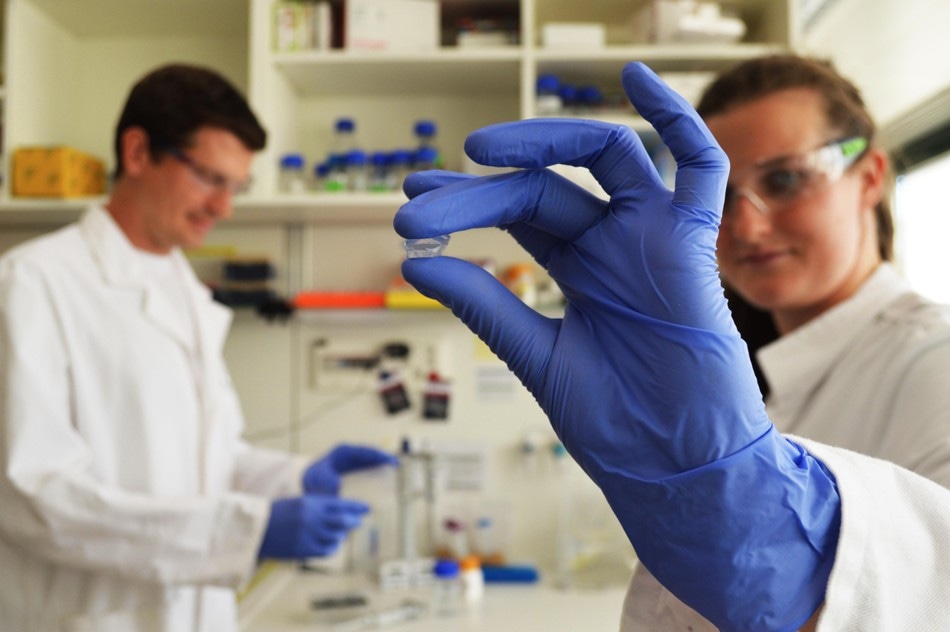Jul 27 2018
Researchers at EPFL have created innovative nanotube biosensors with the help of synthetic biology, which enhances their sensing capabilities in complex biofluids, such as urine and blood. The research has been reported in the Journal of Physical Chemistry Letters.
 Alice Gillen and Nils Schürgers, two of the paper’s authors, making sensor gels out of the new DNA-nanotube complexes. (Image credit: Alessandra Antonucci)
Alice Gillen and Nils Schürgers, two of the paper’s authors, making sensor gels out of the new DNA-nanotube complexes. (Image credit: Alessandra Antonucci)
Biosensors are devices with the ability to detect biological molecules in water, air, or blood. They are extensively used in medical diagnostics, drug development, and biological research. At present, the increasing need for real-time, continuous monitoring of biomarkers in diseases such as diabetes is urging efforts to build portable and efficient biosensor devices.
Single-walled carbon nanotubes are currently being used for developing some of the most promising optical biosensors. The near-infrared light emission of the carbon nanotubes lies within the optical transparency window of biological materials. This suggests that emitted light is not absorbed by blood, water, and tissue such as skin, rendering these biosensors perfect for implantable sensing applications. Hence, these sensors can be placed below the skin and the optical signal can still be detected without any electrical contacts protruding through the surface.
Yet, the omnipresence of salts in biofluids poses a pervasive difficulty in designing the implantable devices. It has been demonstrated that changes in salt concentrations that occur naturally in the body have an impact on the selectivity and sensitivity of optical sensors based on single-walled carbon nanotubes wrapped with single-stranded DNA.
To overcome some of these difficulties, a group of scientists from the lab of Ardemis Boghossian at EPFL constructed stable optical nanotube sensors with the help of synthetic biology. Synthetic biology gives improved stability to the optical biosensors, rendering them highly appropriate for use in biosensing applications in complex fluids such as urine or blood and even inside the human body.
“What we did was wrap nanotubes with ‘xeno’ nucleic acids (XNA), or synthetic DNA that can tolerate the variation in salt concentrations that our bodies naturally undergo, to deliver a more stable signal,” stated Ardemis Boghossian. Alice Gillen, the lead author of the study, headed the efforts in analyzing the impact of specific salts on the optical emission of the biosensors.
The research covers differing ion concentrations within the physiological ranges seen in common biofluids. The scientists were in a position to verify that the bioengineered sensors exhibited improved stability over a wider range of salt concentrations compared to the DNA sensors conventionally used in the field by monitoring the intensity of the signal of the nanotubes as well as shifting of the wavelength of the signal.
This is really the first time a true synthetic biology approach is being used in the field of nanotube optics. We think these results are encouraging for developing the next generation of optical biosensors that are more promising for implantable sensing applications such as continuous monitoring.
Ardemis Boghossian